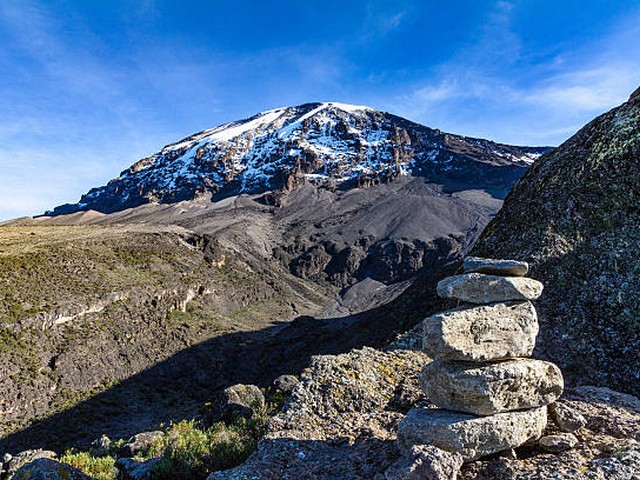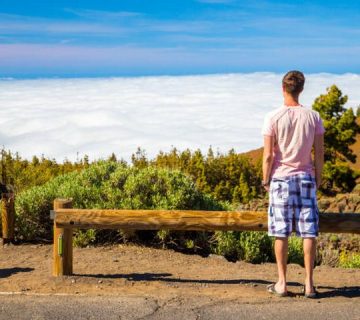Kilimanjaro Trek With Children: Tips And Advice
Standing as a beacon of adventure and natural beauty, Mount Kilimanjaro is not just a mountain but a symbol of challenge and accomplishment. Imagine standing atop this majestic peak with your family, the clouds a mere carpet under your feet, sharing a moment that will live in your memories forever. At Kilimanjaro Centre for Trekking and Ecotourism (KCTE), we believe that the spirit of adventure should be instilled early, and what better way than a trek up Kilimanjaro with your children? This guide is crafted to help you turn this dream into a splendid reality, offering essential tips and advice for a family-friendly journey up the highest peak in Africa.
Preparing for the Trek: A Family Affair
Plan Together:
Involvement is key. Engage your children in the planning process, letting them know about the destination, the wildlife they might see, and the fun of camping outdoors. This builds anticipation and makes them feel part of the adventure from day one.
Physical Preparation:
Kilimanjaro is demanding, even for the fittest adults. Start a family fitness routine well in advance. Include activities like hiking, swimming, and cycling to build stamina and acclimatize to outdoor pursuits. It’s not just about reaching the summit, but enjoying the journey together.
Medical Check-Up:
Consult with a healthcare provider before embarking on the trek. Discuss altitude sickness and its effects, and ensure that all family members are physically and mentally prepared for the climb.
Choosing the Right Route and Time
Best Route for Families:
The Marangu and Rongai routes are recommended for families. These routes offer a more gradual ascent and better acclimatization, increasing your chances of a successful summit. The Marangu route also has hut accommodations, which might be more comfortable for children than tents.
Best Time to Climb:
Opt for the dry seasons, from June to October or from December to March. These periods offer clearer skies and more stable weather, making the journey more comfortable for children.
Gear Up: Essential Packing for Children
Appropriate Clothing:
Layering is paramount. Pack breathable base layers, insulating mid-layers, and waterproof outer layers to protect against the mountain’s varying climates. Don’t forget warm hats, gloves, and sturdy hiking boots.
Snacks and Hydration:
Children might have different food preferences and may eat smaller amounts more frequently. Pack plenty of their favorite snacks and encourage hydration with easy-to-carry water bottles or hydration packs.
Entertainment:
Include lightweight games, books, or a journal. These can be great for downtime in the evenings or if you need to spend extra days acclimatizing.
On the Mountain: Safety and Enjoyment
Pace is Key:
The mantra “pole pole” (slowly, slowly in Swahili) is crucial for a successful ascent. A slower pace helps with acclimatization and conserves energy. Make frequent stops to rest and enjoy the view.
Engagement and Motivation:
Keep the children engaged by teaching them about the flora and fauna you encounter. Celebrate small milestones, like reaching a campsite, with a small treat or a fun activity.
Health Monitoring:
Keep a close eye on how children are feeling physically and mentally. Symptoms of altitude sickness can include headache, nausea, and dizziness. If any family member feels unwell, it’s crucial to descend to a lower altitude.
After the Climb: Reflecting on the Journey
Take time after your trek to discuss what everyone enjoyed most and what was challenging. This can help children process the experience and reinforce positive memories. Perhaps start a scrapbook or a photo album as a family project to commemorate the adventure.
Why Choose KCTE for Your Family’s Kilimanjaro Adventure?
At Kilimanjaro Centre for Trekking and Ecotourism (KCTE), we understand the nuances of organizing a family trek. We offer tailored family packages, experienced guides knowledgeable in family needs, and full support every step of the way. Choosing KCTE means opting for an experienced partner who values safety, enjoyment, and the transformative power of adventure.
Frequently Asked Questions
Q1: What is the minimum age for children climbing Kilimanjaro?
A1: The minimum age recommended for climbing Kilimanjaro is 10 years old. However, this can depend on the child’s physical and mental readiness.
Q2: Can we rent hiking gear for children from KCTE?
A2: Yes, we provide rental options for all essential hiking gear designed for children, ensuring they are as well-prepared as adults.
Q3: Are there special group rates for families?
A3: Yes, we offer special rates for families. Contact us directly to discuss group sizes and pricing.
Q4: How can we prepare our children for the altitude?
A4: Start with gentle altitude gains during your training, if possible. Once on the mountain, ensure adequate hydration, proper nutrition, and heed the pace set by our experienced guides.
Ready for the Adventure of a Lifetime?
Climbing Kilimanjaro with children is not just a trek; it’s a profound learning experience and an unforgettable bonding opportunity. If you’re ready for this incredible adventure, contact Kilimanjaro Centre for Trekking and Ecotourism (KCTE) today, and let us help you make lifelong family memories atop one of the world’s most iconic peaks.




